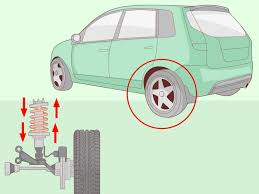Posted on 10/31/2019

Before you hit any harsh winter conditions, have your vehicle serviced to prepare it for the challenges winter can pose. Our ASE Certified Technicians at Hillside Auto Repair can get you prepped and ready for the winter season! (Ask us how you can get one of our handy ice scrapers!) Things that to check to prepare your vehicle: Cooling system – It is recommended to maintain a ratio between 50/50 and 70/30 of antifreeze to water. Ask your technician what antifreeze should be used for your vehicle and the appropriate coolant-to-water ratio to prevent against corrosion and potential freezing. It’s incredibly important to use the proper coolant, especially in import vehicles! Battery – Battery power decreases as the temperature drops, meaning that it takes more power to start your car in the winter. Our technicians can perform a battery test for you to ensure your vehicle is ready! Tires- It’s possible to use all-season tires in winter conditions however, this won ... read more
Posted on 10/22/2019

Your car’s suspension system consists of three primary components – shock absorbers, springs, and struts. All three of them help the control and handling qualities of your vehicle. Without shocks and struts, a vehicle would bounce hard, making driving extremely difficult, not to mention dangerous. Shocks and struts are considered critical to the safe operation of your vehicle – they are designed to help keep your tires on the road and you in control of your vehicle. Shock absorbers work by controlling the energy, or absorb the spring, of the springs to prevent bottoming out. So, when you hit a pothole, the bottom of your car doesn’t smash into the ground. The shocks, struts, and springs work together and keep the movement of the car under control as it moves down the road, over bumps, around corners and curves. Struts are a structural part of the suspension system mounted to the chassis of the vehicle to hold the shocks in place. They control spring and suspen ... read more
Posted on 10/1/2019

Signs of a worn wheel hub bearing vary in severity. Some may be difficult to detect, leading to damage. Noise is a classic sign of a bad wheel bearing or wheel hub bearing. “Snapping, clicking or popping“ This noise is typically heard when cornering or making sharp turns. This can indicate a worn or damaged outer CV-joint. However, it also can be related to excessive bearing endplay, usually associated with inadequate clamping. “Grinding while going” The noise is normally heard when turning or when there is a shift in load. Typically, this means there is mechanical damage in a wheel-end system. Related to a bearing, it means a loss of integrity such as roller or raceway damage. “Wheel vibration and/or wobble“ This is generally associated with a damaged or worn tire, wheel or suspension component or severe chassis misalignment. When related to the hub or bearing, this normally indicates the loss of ... read more